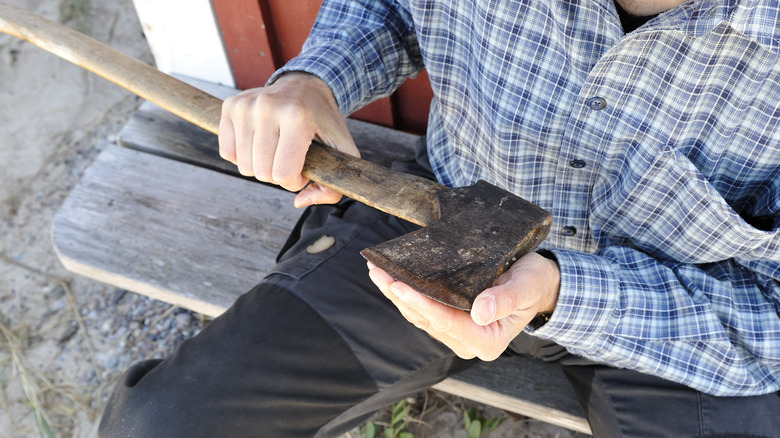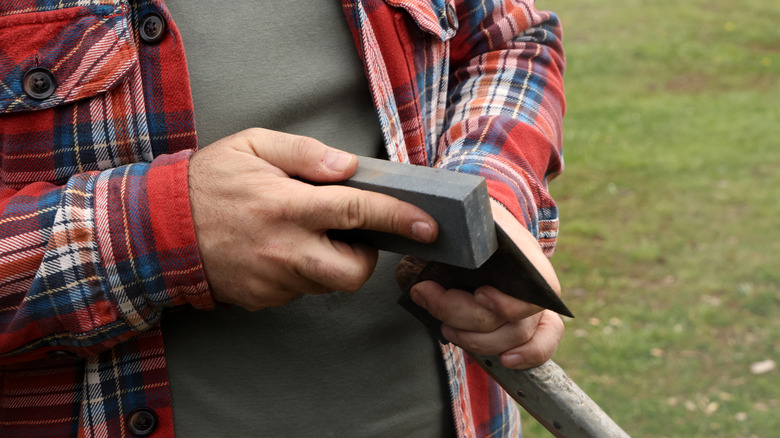Master Using A Whetstone To Sharpen Your Axe By Hand
We may receive a commission on purchases made from links.
A file is a quick and effective way to get a damaged axe blade into shape, but you can't beat a whetstone to get it really sharp again. Grinding by machine may be faster but might ruin the temper (hardness) so it will no longer take an edge. Sharpening an axe by hand with a whetstone is not only better for the tool, but it can be surprisingly satisfying too.
When you sharpen your axe, wear strong gloves to protect your hands. You could steady the blade in a vise, but as you won't be applying much pressure, you may prefer sitting with the head flat on your thighs. Even if there's damage, the blade should have a visible bevel (cutting angle). If the blade is very blunt, redefine this with the coarse side of the whetstone. Use small circular motions, working slowly along the whole blade. Relax and focus on maintaining the correct angle. After doing this a few times, turn the axe head over and work on the other side. Repeat until you have a well-defined edge, then switch to the finer grit to make the axe as sharp as you need it. Some suggest it should be able to slice a sheet of paper, but being able to chop wood is enough for most people! The same technique also works for sharpening an adze, a versatile woodworking and garden tool well worth checking out if you don't have one.
Which whetstones work best for axe sharpening?
Whetstones come in a variety of different shapes and sizes. Rectangular ones are popular for bench work but can be awkward to hold. Many people find a puck whetstone better. They are also easy to find space for in a rucksack if you want to keep your camping axe sharp. Puck whetstones are available at Amazon for under fifteen dollars. They are usually dual grit with coarse and fine surfaces for the two different stages of the sharpening process. Most grit combinations will work, but something like 180/600 is frequently recommended.
Whichever type of whetstone you choose, it's important to know what lubricant it uses. Some use water, and it's common to dip them in a bowl for a few minutes before use. For something more portable, you can pour water onto the whetstone from a small bottle. Other whetstones use oil. Using the wrong liquid can cause problems and reduce their effectiveness, so check before you start sharpening.

